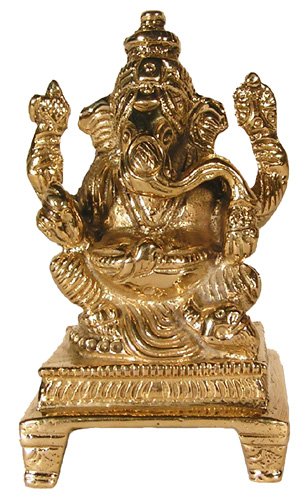Ganesh Statue Naga Land Tibet Sacred Stones Amulet Review


Buy From Amazon.com
Ganesh Statue Naga Land Tibet Sacred Stones Amulet Feature
- Chakra Balancing Protection From Negative Influences
- Himalayan Hand Crafted By Nepalese Artisans
- Native Tibetan Brass Motif Buddha Statue
- Display Hindu Altar/Home or Office to Support Free India, Tibet & Nepal
- 4 Inch TantricBuddhistRelics ***** Rating
Ganesha appeared in his classic form as a clearly recognizable deity with well-defined iconographic attributes in the early 4th - 5th centuries. The earliest image of Ganesha is in the niche of the Shiva temple at Bhumra, dated to the Gupta period.
The forms of Ganesha found in Hindu art of Java, Bali, & Borneo show specific regional influences. The gradual spread of Hindu culture to southeast Asia established Ganesha in modified forms in Burma, Cambodia, & Thailand. In Indochina, Hinduism & Buddhism were practiced side by side, & mutual influences can be seen in the iconography of Ganesha in the region. In Thailand, Cambodia, & among the Hindu classes of the Chams in Vietnam, Ganesha was mainly thought of as a remover of obstacles. Even today in Buddhist Thailand, Ganesha is regarded as a remover of obstacles, the god of success.
Afghanistan had close cultural ties with India, & the adoration of both Hindu & Buddhist deities was practiced. A few examples of sculptures from the 5th to the 7th centuries have survived, suggesting that the worship of Ganesha was then in vogue in the region.
Ganesha appears in Mahayana Buddhism, not only in the form of the Buddhist god Vinayaka, but also as a Hindu demon form with the same name. His image appears in Buddhist sculptures during the late Gupta period. As the Buddhist god Vinayaka, he is often shown dancing. This form, called Nrtta Ganapati, was popular in northern India, later adopted in Nepal, and then in Tibet. In Nepal, the Hindu form of Ganesha, known as Heramba, is very popular; he has five heads & rides a lion. Tibetan representations of Ganesha show ambivalent views of him. In one Tibetan form, he is shown being trodden under foot by Mahakala, a popular Tibetan deity. Other depictions show him as the Destroyer of Obstacles, sometimes dancing. In northern China, the earliest known stone statue of Ganesha carries an inscription dated to 531. In Japan, the Ganesha cult was first mentioned in 806.

Buy From Amazon.com


No comments:
Post a Comment